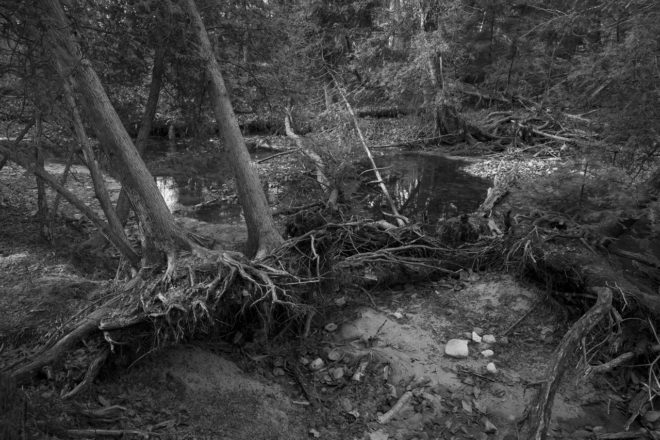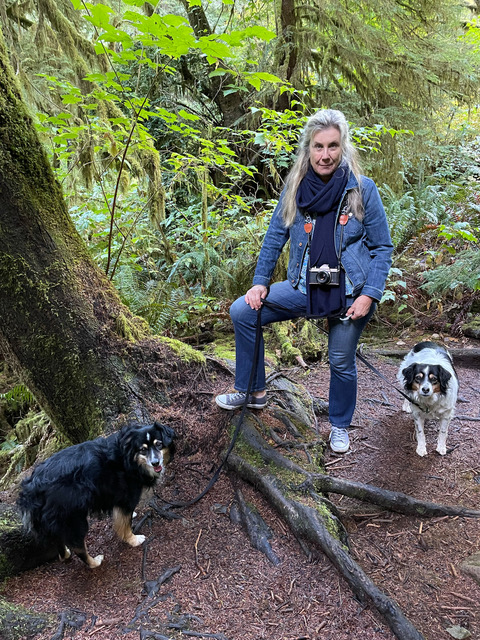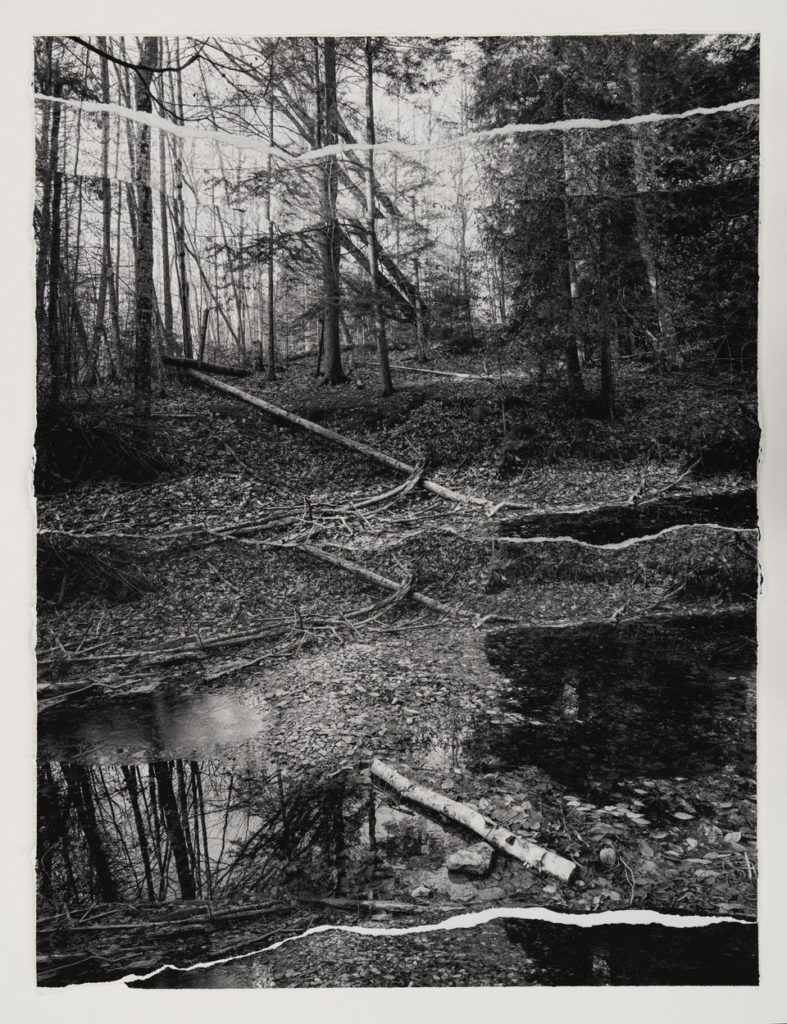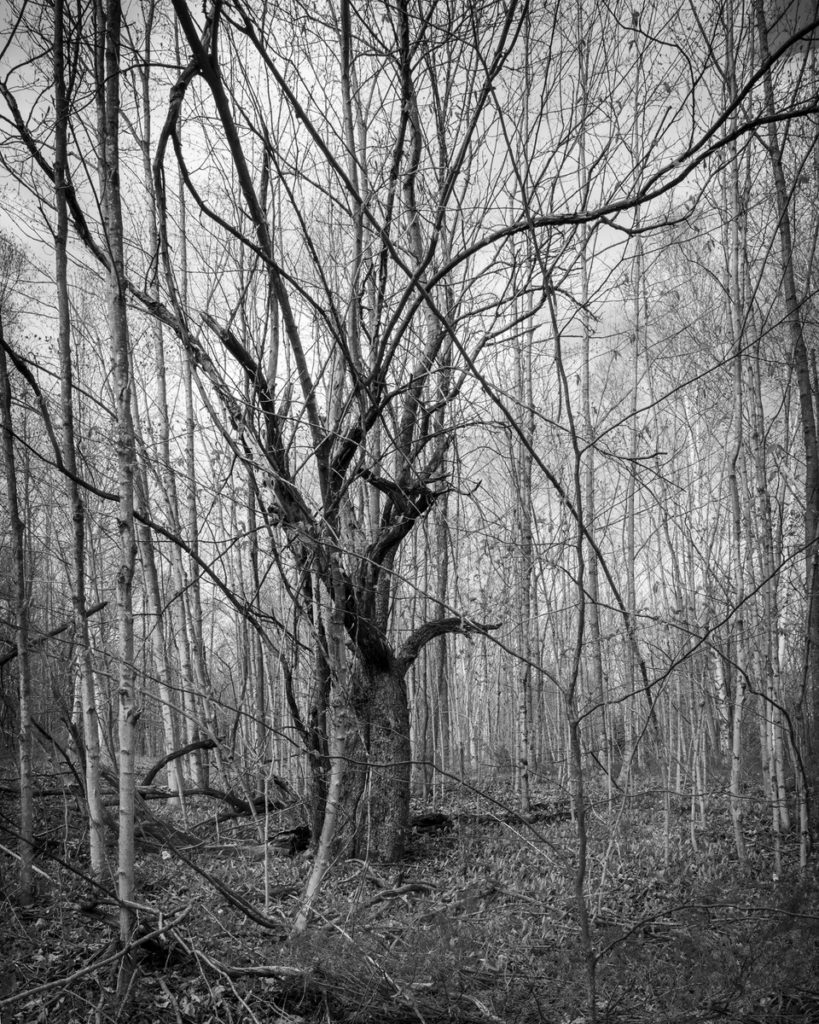Capturing Nature’s Reclamation of the Land Through Photographs
- Share
- Tweet
- Pin
- Share

Now that trees in Door County are finally leafing out, Terri Warpinski may take a break from her project of making black-and-white photographs on Door County Land Trust sites.
“One of the things I love about seeing the non-leafed-out Land Trust properties is that I can define and distinguish many elements,” she said, “whether that’s rocks protruding through the ground or entangled root systems. I love those landscapes in fall, winter and spring before the overstory leafs out and I can’t see the structure any more.”

Warpinski, who taught photography for 32 years at the University of Oregon, now runs newARTSpace in De Pere with fellow photographer David Graham.
Many of her images don’t have an obvious center of interest. Forget about S-curves and frames divided into thirds – some of the rules found in beginner photo-composition manuals.
“I try to be open to what is there and respond,” she said. “It is easy to see the same pictures over and over again. It’s not so easy to have yourself open to discovering something you were not aware of before.”
Warpinski said her work is more about the ecosystem than the trees. She photographs properties in recovery – land that was once cleared for farms, pastures or orchards.
On her website, which has links to many of her past projects, she said her work “reflects her long-term interest in the traces of human activity embedded in the landscape.”
She also looks at how nature reclaims lands that had once been cultivated.
“Fallen trees allowed to decompose in place can become nurse trees for saplings, or habitats for small fauna,” Warpinski explained. “Left in the forest, it reintegrated itself.”
She has researched historical and property records to learn how the Land Trust properties were used in their previous lives.
“It may be an area that has always been swampland while areas around it were cleared and turned into pastures, and other areas where the soil wasn’t as good and stayed wooded,” she said.
Combining research and photography is an approach Warpinski also enjoys using on borderlands, including the U.S. and Mexico, Israel and Palestine, and in Berlin. This approach was part of a project to photograph locations where people were killed trying to cross a border, which she titled Death[s]trip.
“Each site photograph was made on the date that coincides with the anniversary of the victim’s death,” she said, “in the specific location where the event took place.”
Warpinski paired the photographs with “written text based on archival research and vintage mapping of the site from the period of the victim’s death.” She received a 2016 research grant from DAAD, a German academic exchange service, to work in Berlin, with the Stiftung Berliner Mauer as the host institution.
Before the coronavirus pandemic, Warpinski had intended to go back to Berlin to photograph for a month or two, but changing travel rules related to COVID-19 made it difficult to finalize her plans.
The Door County Land Trust project has replaced Berlin, at least for now.
“This has become a treasure trove I hadn’t anticipated,” she said. “It is satisfying to plant my heels close to home and be able to spend a lot of time. I expect to be photographing in this particular place for some time to come.”
Warpinski photographs the changes underway: standing water with leaves floating in it, trees fallen across it or into other trees. The untended landscape is moving from ordered, productive use toward a new state – an unpredictable ecosystem shaped by past uses and current changes in climate.
Through her thoughtful, black-and-white photography, Warpinski invites viewers to look intently and take time to think about what they’re seeing.
“I do hope people will be prompted to think without my having to direct them,” said Warpinski, whose work is on display at the Kress Pavilion in Egg Harbor and represented by Idea Gallery in West Jacksonport. “I hope that through repetition and pace and relationships in a body of work, those things will become evident.”



